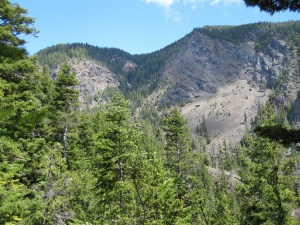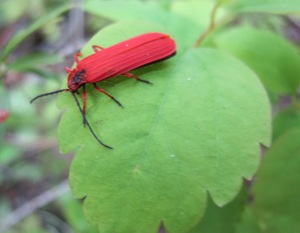Got up in the dark to brew tea and sit quietly before going to work…the wind blew across the opening of the metal chimney, and rain clattered. When light came, I stepped out and heard the wind in the trees. The sound took me straight back to childhood. My parents bought an old farmhouse in the country, and my brother, sister and I slept upstairs. My memory is of angled ceilings and dormers, casement windows and corners. Our beds were tucked under the roof. Although it seemed further, the Pacific Ocean was about fifty miles to the west. Winter storms brought high winds and rain crashing in from the coast. That old house shook and rocked as the wind rushed around all the angles of the house. Rain battered the roof. And we slept, tucked under quilts made by grandmothers, with favorite stuffed animals beside us. I would wake in the dark to hear the voices of the Douglas-fir trees grow louder as the wind blew harder. The air animated them like nothing else.
I never learned to be afraid of the wind or trees. Alert, but not afraid. These things are alive and in motion, and I can only get hurt if I am in the wrong place at the right time. There’s nothing malicious about the wind. So I go out, to hear it and feel it (and come back in if it’s too harsh). The wind travels more miles from the ocean where I live now, and speeds up as it pushes through gaps in the mountains.
Inches of rain have fallen since last week’s return from the backcountry. Ventured out today to discover fresh snow on familiar peaks. After a long dry spell, the creeks rise. A big change and adjustments are needed: soup in the thermos for lunch, rain gear, extra layers, waterproofing on the boots.
I’m grateful for a sturdy roof, quilts, and a hot supper.












